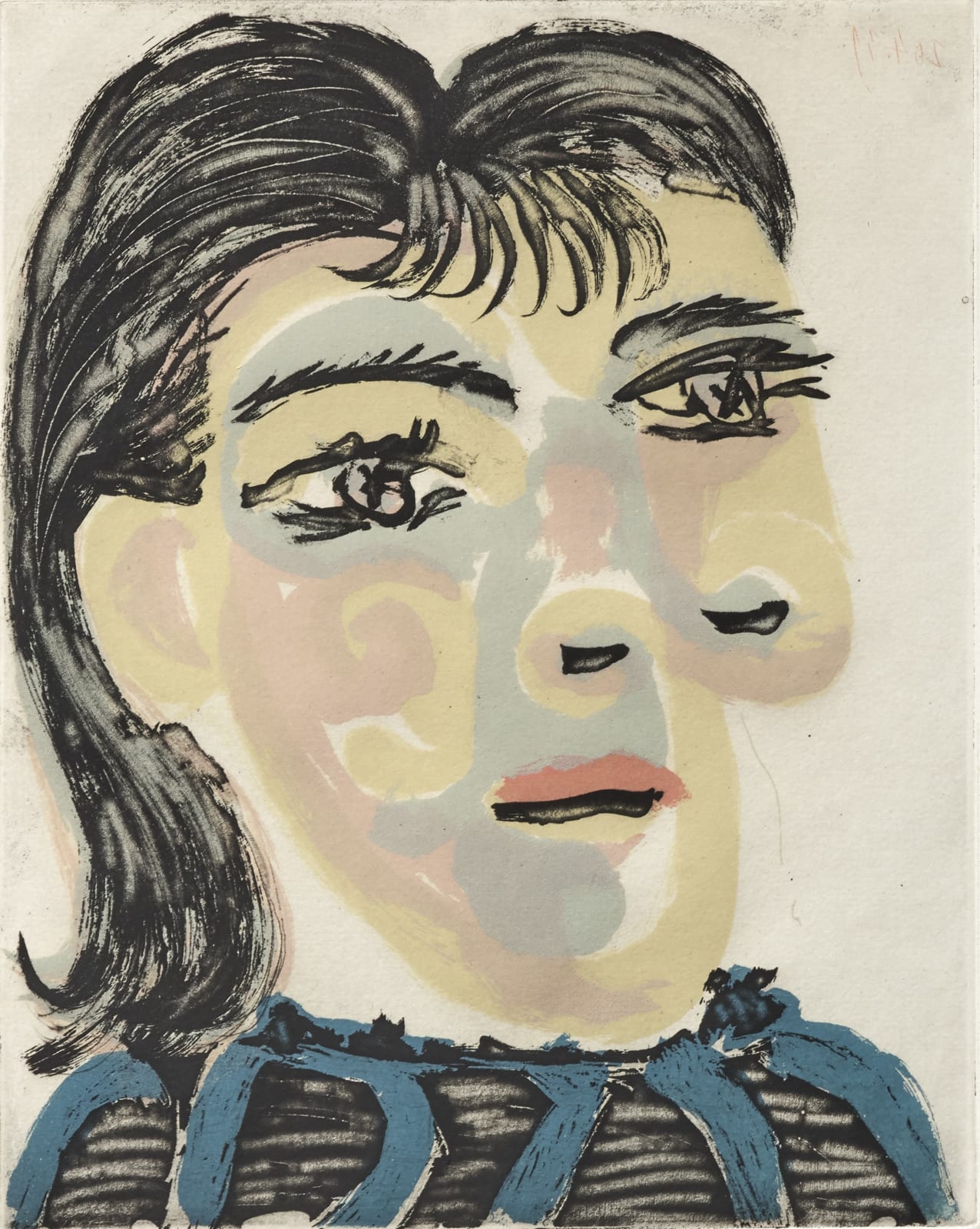Pablo Picasso Spanish, 1881-1973
Framed: 66 x 55 cm (26 x 21 5/8 in.)
Further images
Aquatint : Goya was the first to use it to translate his nightmarish visions with even more vigour and spontaneity. The Romantic painters found in it the ideal means of portraying the atmosphere of a landscape, and Rouault used it to set, in the manner of a stained-glassed window, the colours of his mystical images, with a large and powerful brushstroke of wash aquatint. For Picasso, this process became the element of choice, capable of associating an incredible variety of techniques to engrave, to bite and scratch, all used with a simmering passion and the resulting image always combining playfulness and serenity. Picasso loved using aquatint as the tones obtained could be superimposed on several marked plates of the same dimension to transcribe, during printing, an infinite variety of colour hues. Aquatint wash added a poetic, tactile and living dimension to the brushstroke.
Aquatint : Goya was the first to use it to translate his nightmarish visions with even more vigour and spontaneity. The Romantic painters found in it the ideal means of portraying the atmosphere of a landscape, and Rouault used it to set, in the manner of a stained-glassed window, the colours of his mystical images, with a large and powerful brushstroke of wash aquatint. For Picasso, this process became the element of choice, capable of associating an incredible variety of techniques to engrave, to bite and scratch, all used with a simmering passion and the resulting image always combining playfulness and serenity. Picasso loved using aquatint as the tones obtained could be superimposed on several marked plates of the same dimension to transcribe, during printing, an infinite variety of colour hues. Aquatint wash added a poetic, tactile and living dimension to the brushstroke.
Provenance
Galerie 27, Paris (Lionel Prejger)
Publications
Picasso, Masterpieces from the Musée National Picasso, Paris, Seattle Art Museum, October 8 2010 - January 17, 2011 and Virginia Museum of Fine Arts, February 19 - May 15 2011, reproduced p.164 (n° d'inventaire MP 2863)
Brigitte Baer, Picasso peintre-graveur. Tome III, 1935-1945, Editions Kornfeld, 1985, n°650, repr. p. 185.
Georges Bloch, Pablo Picasso, Catalogue de l'œuvre gravé et lithographié, Vol. I, 1904-1967, Berne, Kornfeld & Klipstein Editions, 1968, n° 1340. Reproduced in full page in colors p. 41
Join our mailing list
* denotes required fields
We will process the personal data you have supplied in accordance with our privacy policy (available on request). You can unsubscribe or change your preferences at any time by clicking the link in our emails.





